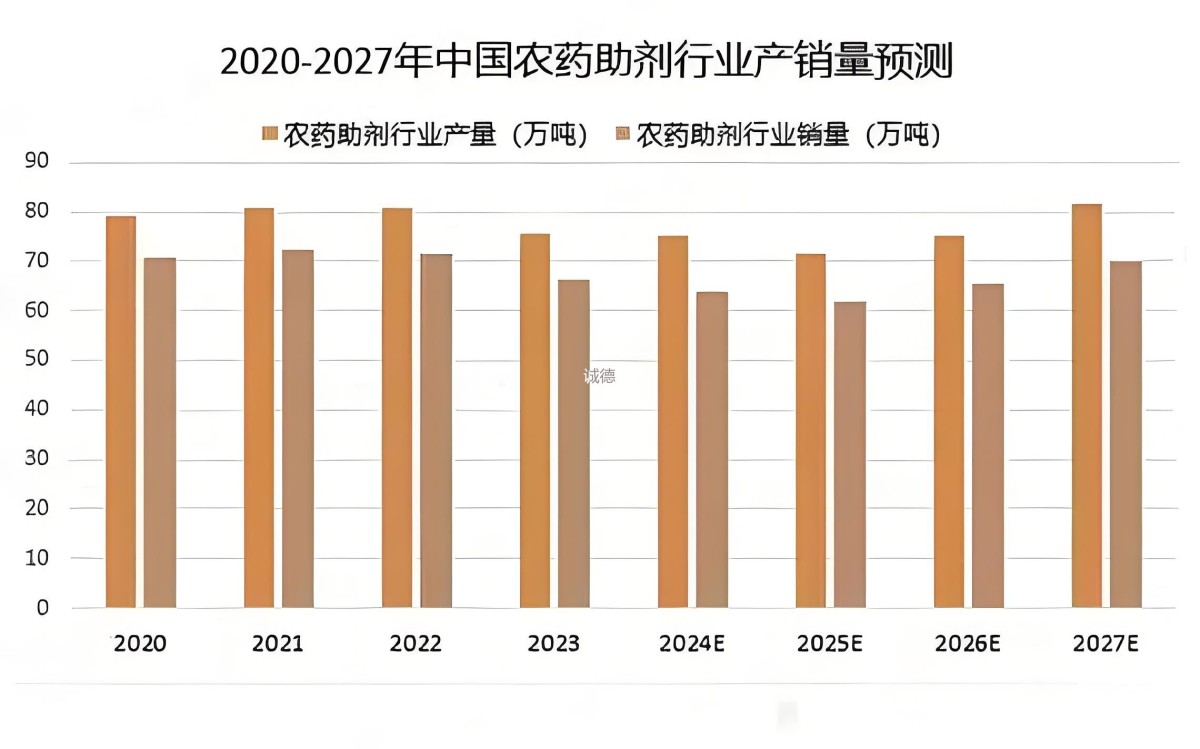In China, due to the relatively short value chain of the pesticide raw material industry, its competitive landscape is also quite fierce. Manager Ren Yongzhi of Zhongnong Lihua Biotechnology Co., Ltd. combines years of experience in raw material procurement and big data aggregation to track the overall industry cyclical changes in 2024. He provides price guidance and market analysis for domestic raw material products, providing professional data analysis for industry professionals and timely and effective reference for enterprise production investment.
According to the Zhongnong Lihua Pesticide Price Index, tracking over a hundred raw material varieties, 66% of the varieties fell year-on-year, while 71% of the varieties remained unchanged compared to the previous month, with only 10% of the varieties rising.
For the raw material market in 2025, Manager Ren predicts the following development trends:
Trend 1: Reduce inventory - replenish inventory, reduce production capacity, and accelerate overseas expansion. In 2022, there will be high inventory in the pesticide market. In 2023, destocking will be the main focus, and in 2024, additional inventory will be added to reduce production capacity. Price for quantity will be used to increase market share, maximize capacity release, and reduce production costs. In the international market, warehouses are established in advance, and pesticide transit warehouses are set up overseas to quickly seize the target market; In the domestic market, channels are flattened, and limited profits are given to end users (formulation companies). The transformation of export mode is accelerating from simple raw material trade to formulation processing and export, and improving survival space by extending the industrial chain. Enterprises are accelerating their overseas expansion, and strong enterprises are accelerating their channel construction in overseas markets through overseas layout registration certificates and factory construction.
Trend 2: Bottom consolidation. The traditional supply curve is flattening, and the price of raw materials is consolidating at the bottom and fluctuating in annual intervals, with no shortage of periodic opportunities; Strong enterprises promote capacity clearance by leveraging diversified advantages and stabilizing the market; The rapid entry of capital and technology from outside the industry has dealt a blow to traditional pesticide enterprises in terms of dimensionality reduction; In the negative feedback loop of the industrial chain, processes, technologies, and engineering support bring about cost optimization and intensified industry competition; The imbalance between supply and demand, coupled with the transfer of pricing power, leads to price fluctuations and oscillations; The unprecedented changes in the international situation have added new uncertainties to the future industry.
Trend 3: Polarization. The speed of market share concentration is accelerating, and this round of competition is most advantageous for the top enterprises in each segmented market. They have economies of scale, strong capital, and strong financing capabilities, and their market share will further concentrate towards the top enterprises. The industry focuses on high-quality development, and in the long run, the trend of the agricultural chemical industry's long-term improvement remains unchanged. "Internal competition" forces excellent enterprises to diligently practice their internal skills, pursue high-quality growth, and technological innovation brings about technological and scale improvements, with costs becoming lower and lower. Then, they continuously seize market share from inefficient competitors, endure, and win in the end. Enterprises with innovative compounds and research and development capabilities will benefit from the monopoly of patented products; Value driven enterprises with unique document resources, professional teams, financial strength, and service capabilities can persist in the "internal competition".
Trend 4: Sudden increase in risk. During the period of industrial restructuring and transformation, all links in the industrial chain are facing opportunities and challenges. Upstream supply, construction of high standard factories, uncertain supply of raw materials, doubled project investment risks, and unexpected returns. Downstream demand has led to a significant increase in investment costs for the construction, market development, and registration of high standard factories, as well as limited working capital. The price war of 'no minimum, only lower' may be tough for first tier companies, but for many second - and third tier companies, it may not be the profit and loss line, but the life and death line. The industry has formed a unified consensus that this downturn is expected to last much longer than previous rounds, whether it can withstand being a king or being eliminated. The acceleration of survival of the fittest, the entry of cross industry competitors, and the creation of an ecological closed loop are constantly driving the industry's first mover forward. Traditional business models such as credit and sales are facing increasing risks, and new thinking and models are the only way to explore future paths.
Trend 5: Creating breakthroughs. In the past, overseas giants monopolized the research and market of new drugs, but in recent years, Chinese pesticides have shifted from processing to creation. Enterprises with leading registration certificate layouts can better move towards the terminal, and the use of innovative pharmaceutical formulations can drive an increase in the usage of old products.
Trend 6: Standardized development and technological innovation. In terms of standardized development, such as safety production standardization: safety production processes and technologies combined with high-end manufacturing and new production equipment, such as microchannel reactions, continuous manufacturing, liquid chemistry, etc; In terms of policies, attention should be paid to commissioned processing, one certificate, one product, package management, online sales, etc; In terms of innovation, such as RNAi pesticides, pesticide crystal engineering, crop disease and pest resistance transgenic technology, intelligent and digital marketing transformation, data-driven precision marketing, nanotechnology leading the development of dosage forms, etc., the increment of biopesticides, structural adjustment, quality improvement and efficiency enhancement are all future development directions.

Awesome! Share to:
Related Posts
- The Future of Automatic Filling Technology – Enhancing Efficiency and Reducing Waste
- Current Development Status of Lubricating Oil in China
- The Lubricant Professional Committee of the Petroleum Industry Chamber of Commerce of the All China Federation of Industry and Commerce has been officially established
- EPCM Smart Factory
- The pesticide market is expected to improve by 2025

First class quality service and professional after-sales team.
Factory address:Your company's full name
Office address:Your company's full name
Get in Touch
*We respect your confidentiality and all information are protected.
By clicking 'Allow All', you agree to the storage of cookies on your device to enhance site navigation, analyze site usage and assist with our marketing efforts.

